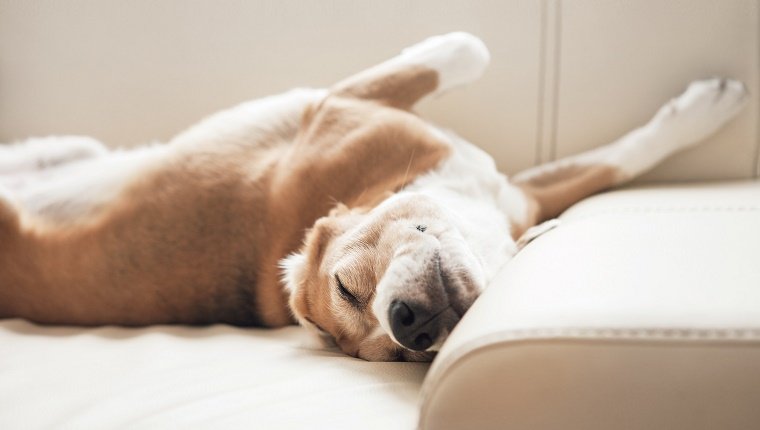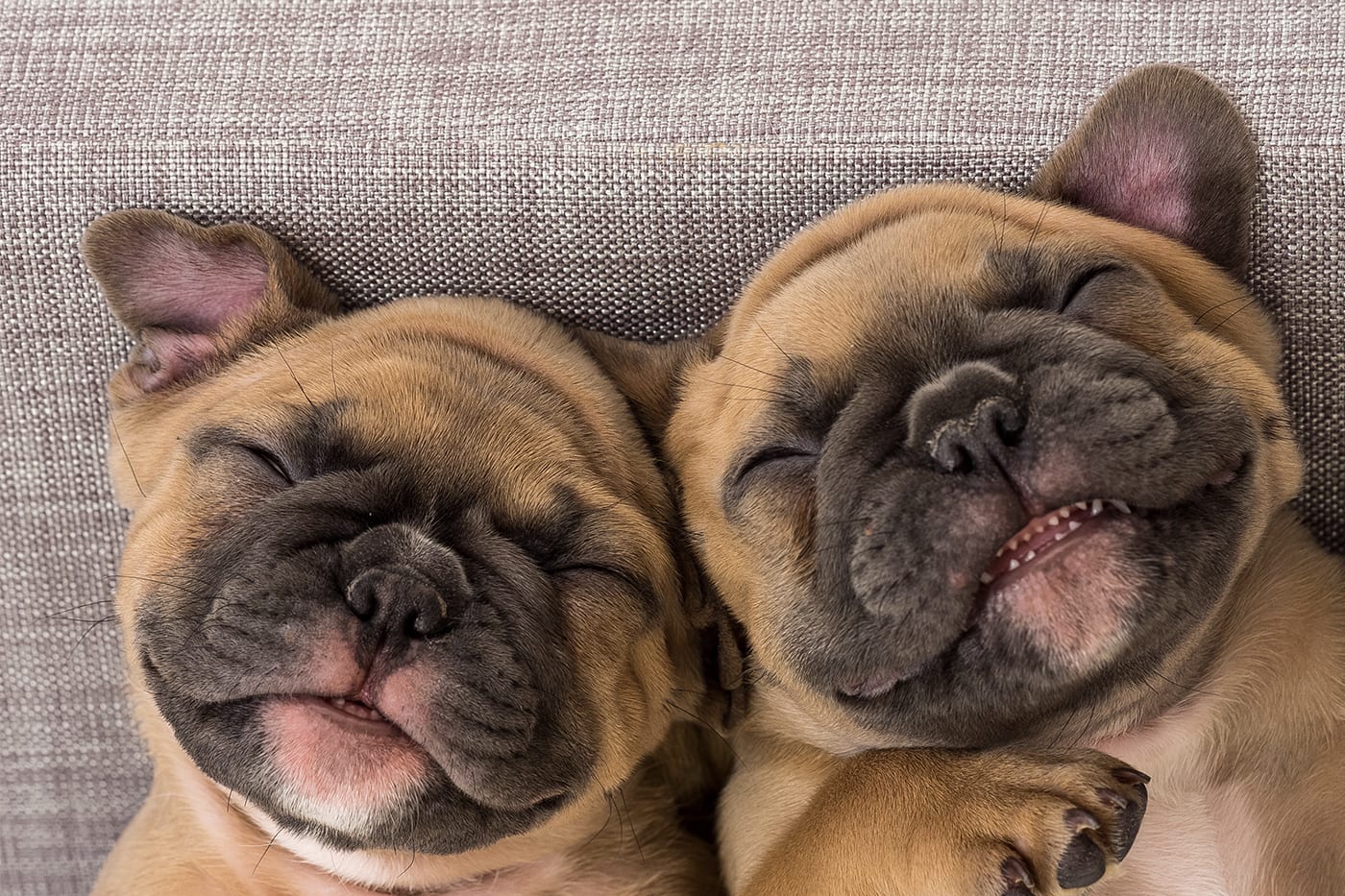A big part about being a dog parent is caring about your dog’s little habits and the small changes in its behavior. The way your dog sleeps may seem like just one of the many ways in which your dog behaves. However, dog sleeping positions in fact carry a lot of clues about the health and mood of your dog which is why you should definitely not neglect the signs.

A good dog parent should realize the difference between the usual sleeping position of your dog and the one it might be sleeping in due to a possible disease, injury, environmental factors, etc., similar to that seen among human beings. Let us therefore look at some the popular sleeping habits and positions of dogs and what they can tell us about them.
Sleeping Positions:
#01 Side Sleeping
You can be pretty sure that your dog is at the height of its comfort when it is sleeping on its side. Most pet experts claim that dogs sleeping on their side are known to be lighthearted and of a good disposition. The fact that the dog can sleep for longer periods even when its belly is exposed completely means that it has a strong bond and trust with the other members in the house. Such dogs when sleeping with their human inmates, help provide a warm feeling and reduce loneliness. However, such a sleeping position provides freedom to move the legs which can inspire the dog to move about in the sleep more and twitch its legs.
#02 Snuggled Up
A conspicuous sign to recognize dogs that are friendly and affectionate is when they are all snuggled up in their sleep. Be it other pets in the house or their owners, when dogs get all cuddly while sleeping, it demonstrates that they are comfortable with others and think of them as one of its pack members. If your dog likes to sleep this way, you might often notice it sticking its back against you when you are sleeping. Not only will this make you extra comfortable with a squishy sleeping buddy but also increase the bond between the two of you.
#03 Stretched Out
This sleeping position is often known as the ‘super dog’ sleeping position due to the forelimbs stretched out and the hind limbs placed behind while your dog sleeps on its belly. This sleeping position is more prevalent among small dogs and puppies which might have fallen asleep while playing. The dogs who sleep in this position are known to be fun loving and filled with energy which is why you may spot them ready to play soon after they wake from their sleep.
#04 Sleeping on the Back
Dogs sleeping on their back may look awkward at first due to the raised limbs but they have a good reason to be sleeping that way. It is primarily because the dog might be feeling too warm or sweaty and needs a little air to cool things down. Similar to sleeping on their side, this position leaves the vital organs of the dog exposed which means they are at comfort with their surroundings. Another variant of this sleeping position is the “crazy legs” pose where the dog sleeps on back and raises its legs in the air out of sheer carefreeness and comfort.
#05 Curled Up in a Ball
This is perhaps the most common sleeping position among dogs, be it domesticated or those in the wild. This is a good way for the animals to keep their bodies warm by trapping as much heat as possible. This position also helps the dogs to cover up their tummy, thus protecting their innards. Although the tightness of the curl depends upon the environment on the outside, it is possible your dog may be sleeping so simply out of habit.

Sleep habits:
#01 Restlessness
The most common reason behind dogs getting restless in their sleep is a possible nightmare. Other potential reasons might be external noise and light which is why you should try to keep your room as dark and as much noise free as possible. Try to gently wake up your dog from a nightmare by calling it so that it can sleep better. Restlessness in sleep is a common behavioral problem among dogs and should be consulted with a vet if found increased.
#02 Cuddlesome
If your dog seems too cuddly while also gradually moving up in the bed every day, chances are that it has its eyes on the plush pillow. Smaller dogs and puppies have been spotted moving stealthily towards the pillow on the bed which they can get full control of once they have gained your trust. This can also indicate that the dog might be feeling too cold on the outside and simply wants to burrow in your bed.
#03 Twitching and Seizures
Twitching among dogs is associated primarily with dreaming where they are found to be jerking their limbs repeatedly. Twitching for a short span is common among all animals and among dogs of all ages. However, if your dog is experiencing an episode of seizure, where the activity during sleep is intense, you should try to wake up the dog and arrange a meeting with your vet at the earliest. Dog parents should therefore look out for such involuntary convulsions or fits that can be triggered by brain activity while the dogs are asleep.
Bottom line:
There are a number of things that you need to take care when parenting a dog such as the sleep hours, the correct dog food, bath frequency, veterinary visits, etc. An anomaly in their health can sometime prompt them to oversleep which is why dog parents often ask us “why do dogs sleep so much?” On the other hand, sleep deprivation among dogs is also reason enough to cause alarm. Check out the required dog sleeping hours to maintain the overall health of the dog. We hope that the dog sleeping positions meaning and other sleep behaviors help you understand your dog better and take proper care of it.
